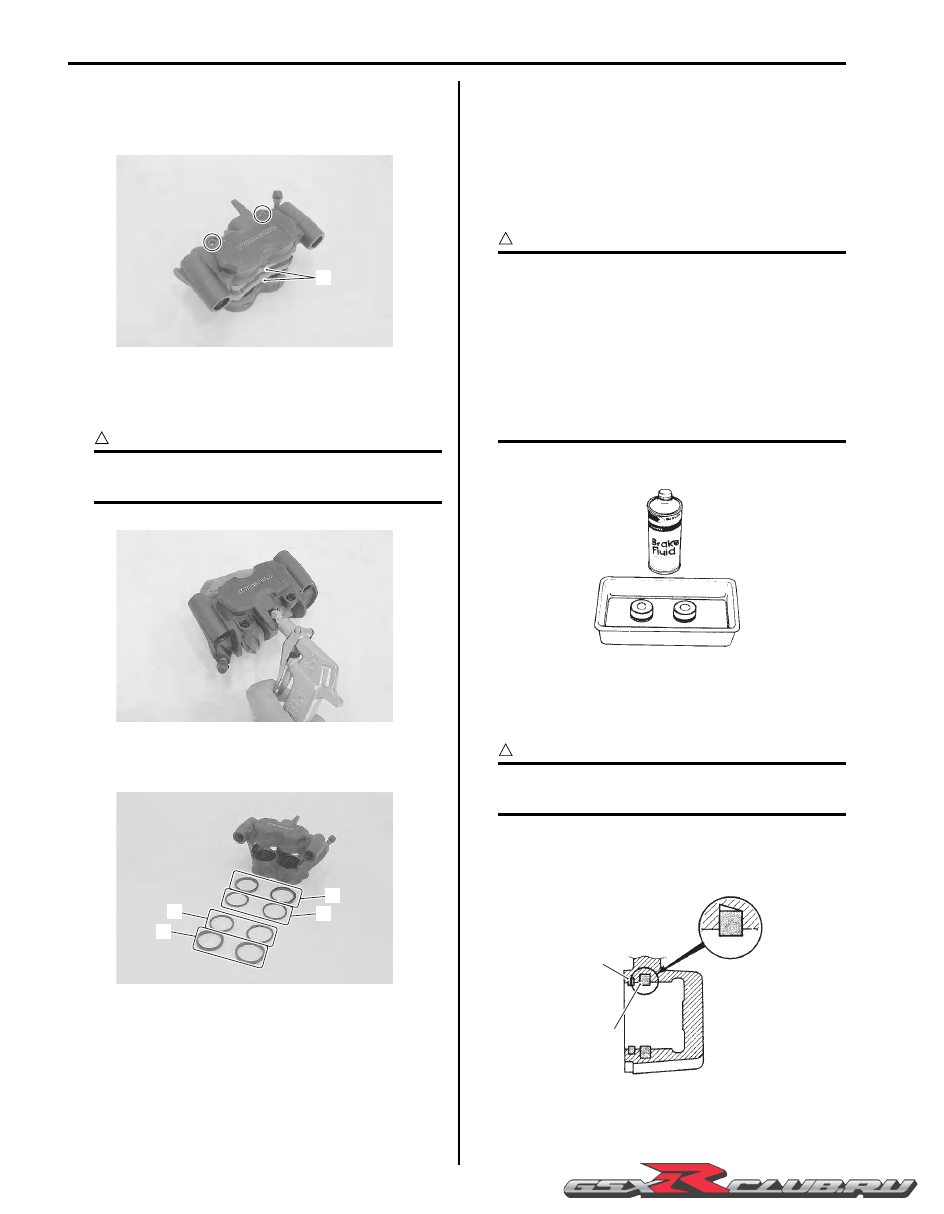Suzuki GSX-R1000. Service Manual - part 33

4B-4 Front Brakes:
Disassembly
1) Remove the brake pads (1) and spring from the
caliper by removing the pad mounting pins.
2) Place a rag over the pistons to prevent them from
popping out and then force out the pistons using
compressed air.
CAUTION
!
Do not use high pressure air to prevent
piston damage.
3) Remove the dust seals (2) and piston seals (3) from
both sides of the caliper.
Assembly
Assemble the caliper in the reverse order of
disassembly. Pay attention to the following points:
• Wash the caliper bores and pistons with specified
brake fluid. Particularly wash the dust seal grooves
and piston seal grooves.
BF: Brake fluid (DOT 4)
CAUTION
!
• Wash the caliper components with fresh
brake fluid before reassembly. Never use
cleaning solvent or gasoline to wash them.
• Do not wipe the brake fluid off after
washing the components.
• When washing the components, use the
specified brake fluid. Never use different
types of fluid or cleaning solvent such as
gasoline, kerosine or the others.
• Apply the brake fluid to piston seals (1) and dust seals
(2).
CAUTION
!
Replace the piston seals (1) and dust seals
(2) with new ones.
BF: Brake fluid (DOT 4)
• Install the piston seals as shown in the figure.
1
I947H1420005-01
I947H1420006-01
2
3
2
3
I947H1420007-01
I649G1420012-02
1
2
I649G1420013-02